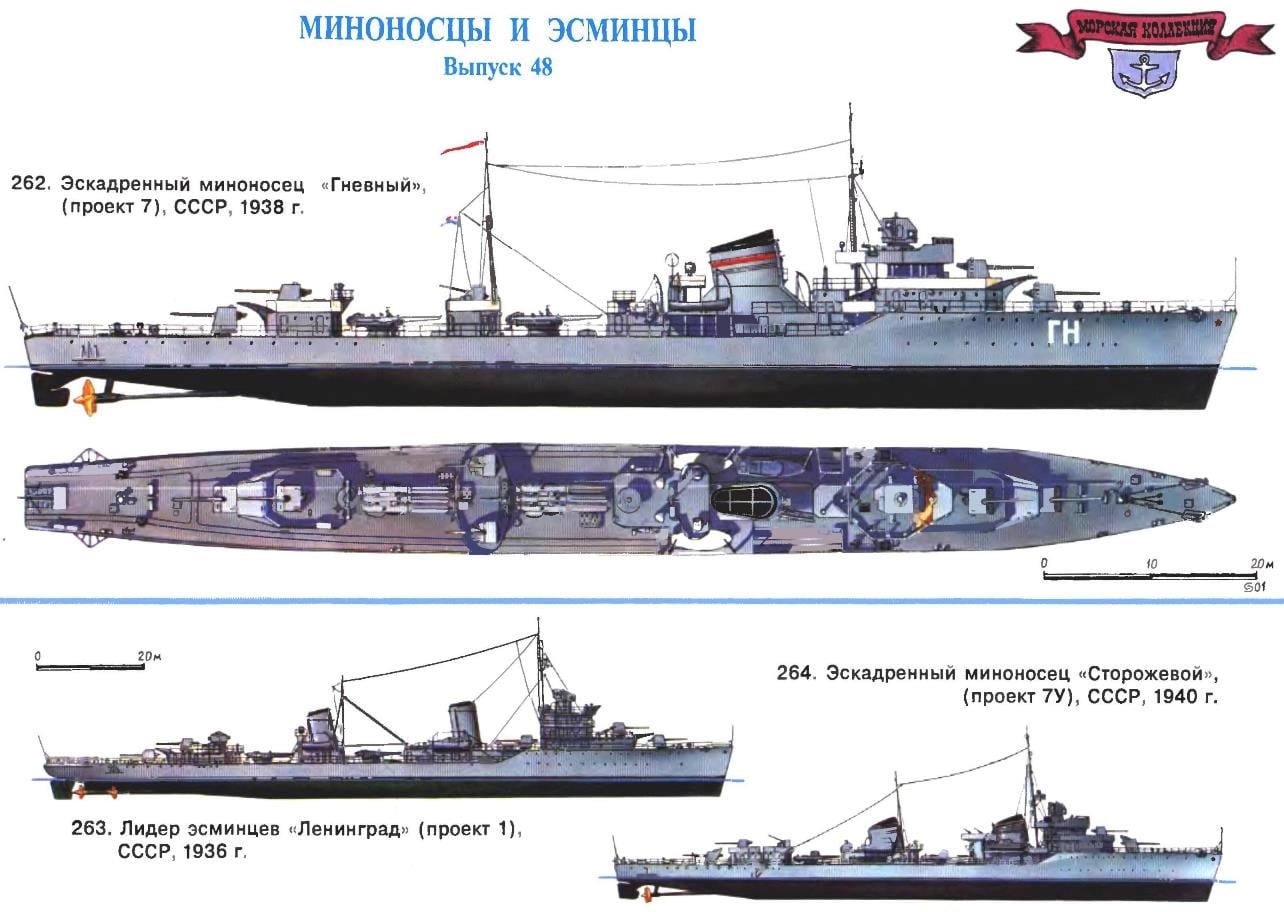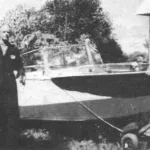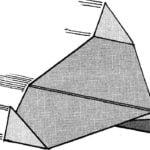 The first silhouettes of enemy ships spotted from the bridge of the leader of “Baku”. The German convoy was abeam of the Norwegian town of vardø was roughly 70 cables. The leader and went after him in the Wake of the destroyer “Reasonable” has dramatically increased the speed. When the enemy was little more than 26 cables, they opened fire with their 130 mm guns. At the same time the “Baku” gave chetyrehstolpnyj salvo (the second unit from the torpedoman, unfortunately, not fired).
The first silhouettes of enemy ships spotted from the bridge of the leader of “Baku”. The German convoy was abeam of the Norwegian town of vardø was roughly 70 cables. The leader and went after him in the Wake of the destroyer “Reasonable” has dramatically increased the speed. When the enemy was little more than 26 cables, they opened fire with their 130 mm guns. At the same time the “Baku” gave chetyrehstolpnyj salvo (the second unit from the torpedoman, unfortunately, not fired).
A minute later and said the Germans first attacked the ships, then the coastal battery. Enemy shells began to explode dangerously close to the Soviet ships, and those six minutes after opening fire put a smoke screen and turned back. Our sailors believed that battled with a convoy of transports, guarded by destroyers, patrol ship and minesweeper (these data provided the enemy discovered the reconnaissance), although in reality German squad consisted of a mine layer “Skagerrak”, two minesweepers and two auxiliary anti-submarine ships. Released leader “Baku” torpedoes went wide, as contained in the report of the commander of the Soviet unit, information about the sinking of one transport was not confirmed subsequently.
This transient sea battle on the night of January 21, 1943, is notable for the fact that he was the only one in the entire history of the Soviet Navy example of using destroyers for their intended purpose — torpedo and artillery attacks of the enemy. More our ships to use torpedoes in combat was not possible. Thus, the task of which is primarily created destroyers of the red fleet, was wrong. However, this is not surprising: usually, the real war is not as it is presented in advance and staff theorists and strategists…
The experience of the First world war showed that the destroyer has become the most universal gun-torpedo ship in the fleet. And one of the first convinced of this by the Russian seamen. The famous “Novik”, successfully operated in the Baltic and the Black sea, effectively replacing a light cruiser. It is therefore quite natural that the list of priorities for the future of the red fleet, special attention was paid to the large destroyers, or, according to the new classification, the leaders. With the creation of just such a vehicle began the revival of the domestic military shipbuilding after a long break caused by the civil war and devastation.
According to specifications developed by the headquarters of the red Navy in 1925, a promising leader was a rather bezbrody light cruiser. He had to have a displacement of about 4,000 tons, speed 40 knots, and in addition to the two three-pipe torpedo tubes to bear four 183 mm (!) guns and even a catapult with a seaplane. Later, in the preparation of the shipbuilding program in 1929, these characteristics have changed on more realistic: a displacement of 2250 tons, armed with five 130mm guns and two four 533-mm torpedo tubes. However, the requirement on Board the aircraft survived. In fact, from that moment began the history of the new-generation domestic — now Soviet — destroyers.
The leaders of project 1, which were given the names “Leningrad”, “Moscow” and “Kharkiv”, was developed at the Leningrad design Bureau under the overall guidance of V. A. Nikitin. They were created without any prototype, literally “clean slate” and had a number of original features. So, they have had an unconventional three-shaft turbine installation and the peculiar contours of the rear of the hull. Based on the requirements of very high speed (40.5 per node), the Soviet designers proposed and tested on models of unusual theoretical drawing with a sharp formations of stern and streamlined fillet propeller shafts without supporting brackets, the so — called “pants”. Very impressive look and artillery weapons. Nominally match the French leader “Jaguar”, however if a 130-mm gun had a barrel length of 40 calibres, that our ships — 50 calibers. Fire control for the first time in the Soviet Navy was carried out using the Central automatic fire. Because the experience of creation of similar systems in the USSR was not, three sets of such devices with the command-ranging posts (KDP) bought in Italy by the firm “Galileo”.
All three leaders of the project 1 is laid on the stocks of the factories in Leningrad and Nikolayev in the autumn of 1932. The construction proceeded with great difficulty — was affected by the weak industrial base and lack of skilled workers. A serious problem was fraught with the fact that almost all weapons and a system to the time of development of the drawings of the ships themselves only existed on paper, and when they finally were embodied in metal, and their mass-dimensional characteristics significantly exceeded the design. Built overload has grown steadily; to compensate, in particular, had to abandon the seaplane.
Formally adopted the instrument of transfer of the head of the “Leningrad” of the Navy was signed on 5 December 1936, but in fact all three leaders came into operation only in the second half of 1938. The completion of ships afloat and the elimination of numerous defects took twice the time than expected to plan.
On sea trials the leaders showed excellent results: “Leningrad” on one of the runs reached a speed of 43 knots, “Moscow” — 43,57 site. It was the success of Soviet shipbuilders. At the same time revealed (quite naturally) and many weaknesses of the ships: strong vibration, insufficient strength, poor seaworthiness. The sharp contours of the stern, although and reduced the resistance to motion, but at high speed caused a significant trim by the stern for had to make in nasal compartments water ballast. Therefore, the next three leaders of the “Minsk” decided to build the redesigned project, which was given the number 38.
“Minsk” was generally saying, “Leningrad”, but was distinguished by the presence of the transom and the more familiar lines aft. From “pants” was abandoned in favor of conventional propeller shafts with brackets. All this, of course, impact on running performance (best score on the test head leader — 40.5 per node), but will eliminate the stern trim on the go, and also to simplify the technology of construction of the housing. Minsk, joined the Baltic fleet in 1938, the KDP received the Italian company Galileo, and built in Komsomolsk-on-Amur, Baku and Tbilisi was equipped with a fire control instruments exclusively domestic production.
Creating leaders of the “Leningrad” was an important stage in the development of the Soviet shipbuilding. The main task is to design and build ships, the armament and speed are not inferior to the best foreign representatives of this class were executed, and executed from scratch, without substantial assistance from abroad. However, to start mass construction of such ships seems unrealistic: too complex and expensive was the three-shaft power plant, low-tech hull design. And the size of the leader for closed theaters of the Baltic and Black seas have looked redundant. So when the Soviet government embarked on the creation of a “Large fleet”, the project of destroyers, suitable for large-scale construction had to be developed anew. And here was hailed as foreign expertise, for which a number of leading experts seconded to the foreign shipyard.
In 1932, a delegation of Soviet shipbuilders visited Italy. There her attention was attracted destroyers V SS Folgore and build “Maestrale” (“modelist-Konstruktor” No. 6 for 2001). It is the latter and decided to take as the prototype of the “seven” is a serial destroyer of project 7 (“Angry”). The Italian company “Ansaldo” willingly accepted the offer of cooperation. She provided all the necessary drawings and allowed the Soviet designers to study the technology of building ships in their factories. However, artillery on the prototype of our sailors seemed weak, and twin 120-mm guns decided to replace the 130-mm 50-caliber (the same model B-13, as in the leaders) to single installations. Looking ahead, we note that inherent in our shipbuilders the desire to “push” to the project as more powerful weapons very often become the root cause of many subsequent problems.
The design of the destroyer was completed by the end of 1934, and the entire series of ships (53 units) was planned to deliver the fleet in record time — not later than 1938. It is real, very modest capabilities industry leadership were ignored, and the emphasis was only on Stakhanov methods and the effectiveness of the system of penalties — up to bring to justice all responsible for the schedule… Well, for greater effect series itself destroyers became known as “Stalin”.

262. Destroyer “Angry” (project 7), USSR, 1938
It was built at the plant named after A. Zhdanov in Leningrad. Displacement standard 1657 t, full 2039 T. maximum Length is 112.5 m width 10.2 m, draft 3,8 m. Capacity twin-shaft turbine plant 48 000 HP (designed) speed of 38 knots. Armament: four 130-mm guns, two 76 mm and two 45-mm anti-aircraft guns, two 12.7 mm machine guns, two three-pipe 533-mm torpedo tubes. Only in the years 1938-1942 built 28 units; another ship (“Resolute”) was killed when towing from Komsomolsk-on-Amur to Vladivostok before the official commissioning.
263. The leader destroyer Leningrad (project 1), USSR, 1936
It was built at the plant named after A. Zhdanov in Leningrad. The normal tonnage of 2282 t, full 2693 T. Maximum length of 127.5 m, width 11,7 m, draft 4,18 m. Capacity of three-shaft steam turbine 66 000 HP, speed 43 knots. Armament: five 130-mm guns, two 76 mm and two 45-mm anti-aircraft guns, four 12.7-mm machine gun, two four 533-mm torpedo tubes. Just 1936-1940 years built six units, including three on improved project 38 (type “Minsk”).
264. Destroyer “Storozhevoy” (project 7U), USSR, 1940
It was built at the plant named after A. Zhdanov in Leningrad. The standard displacement of 1686 tons, full 2246 T. maximum Length is 112.5 m width 10.2 m, draft 3,8 m. Capacity twin-shaft steam turbine 54 000 HP (designed) speed of 38 knots. Armament: four 130-mm guns, two 76-mm and three 45 mm antiaircraft guns, four 12.7 mm machine guns, two three-pipe 533-mm torpedo tubes. Only in the years 1940-1945 built 18 units.
Initially the stipulated time frame more or less carried out. At the end of 1935, managed to lay the head “Angry” and five “sevens”, and the next — and all the rest. However, it soon became clear that to solve quickly all the problems will fail. Company-suppliers delayed supply of materials, equipment and machinery, and shipyards were unprepared for the planned pace of construction — the situation is not saved even the hour of the shops. Shortcomings of designers provoked a protracted battle between the shipbuilders and designers, and each of the conflicting parties tried to shift the blame to another… to the end of 1936 was able to launch only seven destroyers, three in Leningrad and four in Nikolaev.
But a fateful role in the fate of the “sevens” played the incident in may 1937, off the coast of Spain. The British destroyer “hunter”, performing at the roadstead of the port of Almeria the role of a neutral observer of the fighting Republicans and Franco, has touched the drifting mines. The explosion instantly went down its power plant is a linear scheme (when the first are all boiler branch, followed by the turbine). Although the ship remained afloat and was later repaired, the linear layout of the machine-boiler system has been criticised. The possibility of complete loss from a single hit of a torpedo, bombs or large shells shipbuilders forced many countries to reconsider their views on ensuring the survivability of combat ships. Preferable looked the echelon layout of the boilers and turbines, when the main machinery divided into two separate groups.
Not left without attention this discussion in the Soviet Union. At a meeting in Moscow, held three months after the incident with the “hunter”, Stalin was dissatisfied with the linear layout of machine and boiler rooms on the destroyers “Stalin” series. The result was not long in coming (remember, it was 1937): draft of the ship declared “subversive”, and involved in its development designers immediately arrested. The construction of destroyers, so painstakingly detailed in the six factories was suspended.
Urgently — for a month — project “seven” was perekomponovkoy echelon under the scheme of the power plant and approved under the designation 7U (“improved”). The designers managed to “cram” in a close case the fourth steam boiler; the ship, therefore, became a twin. The bow superstructure was moved to 1.5 m in the nose armament retained (although the torpedo tubes were replaced by more sophisticated). Power turbines and survivability of energy has improved somewhat, but deteriorated seaworthiness and decreased cruising range. In General, any advantages over its predecessor, the “sevens” was not, but the decision signed by Stalin personally, at the time, was not discussed.
However, in terms of the impending war, the delay in the implementation of the shipbuilding program looked extremely dangerous. So after a series of meetings the most part of the destroyers — 29 units — decided to finish the initial project. Another 18 buildings were in a stage that allowed to restructure power plant, remortgaged the project 7U (the lead ship was the Baltic “Watchdog”). The remaining six had a low degree of readiness, was dismantled on the stocks.
Thus, instead of 53 destroyers “Stalin” series by 1 January 1939, managed to deliver the fleet total to seven. The full program, even in the abbreviated form failed, and the beginning of the great Patriotic war: 22 June 1941 in the ranks were 22 “seven” and nine “sevens”. Another 15 ships were built already during the war.
The war became a severe test for the Soviet destroyers of the first generation. They fought the enemy on all four fleets suffered heavy losses. If you do not take into account Pacific ships (their part in the war against Japan was symbolic), of 36 destroyers of project 7 and 7U killed 18 — exactly half. And of the five who fought the leaders of the “Leningrad” three, including both the black sea. The main opponents of the Soviet Navy was aviation and mines. But to go on the attack against enemy ships them almost no chance. Our torpedoes destroyers and the leaders of all war fired only twice: in January 1943 in the North (as discussed above) and in December 1942, on the Black sea, when a “lively” and “Ruthless” in a solid fog took coastal rocks for enemy transports… According to the latest data from the destroyers “Stalin” series on real military victory can claim only one ship — “Reasonable”. He paired with passed by the British destroyer “Hardy” December 8, 1944, pursuing the German submarine and-387, which is then the connection failed and the base is not returned.
However, compared with their own losses inflicted on the enemy the damage is not purely mechanical. At the black sea, and Baltic destroyers just wasn’t a worthy opponent on the sea, and the tasks they had to perform, were not foreseen what the pre-war plans. As for the torpedo ships of our fleet, they were not so bad. They had a powerful artillery weapons, sophisticated fire control instruments, and had, in General, good survivability. Many of their weaknesses — poor anti-aircraft armament, insufficient casing strength, low stability, low cruising range was in almost the majority of their foreign peers. Design and concept of the Soviet destroyers of probation were in the middle of the “scale” of his class, undoubtedly second only to the us. And if not for the critical situation prevailing in our Maritime theatres from the very beginning of the war, they probably would be able to realize their potential much more successful.
S. BALAKIN



